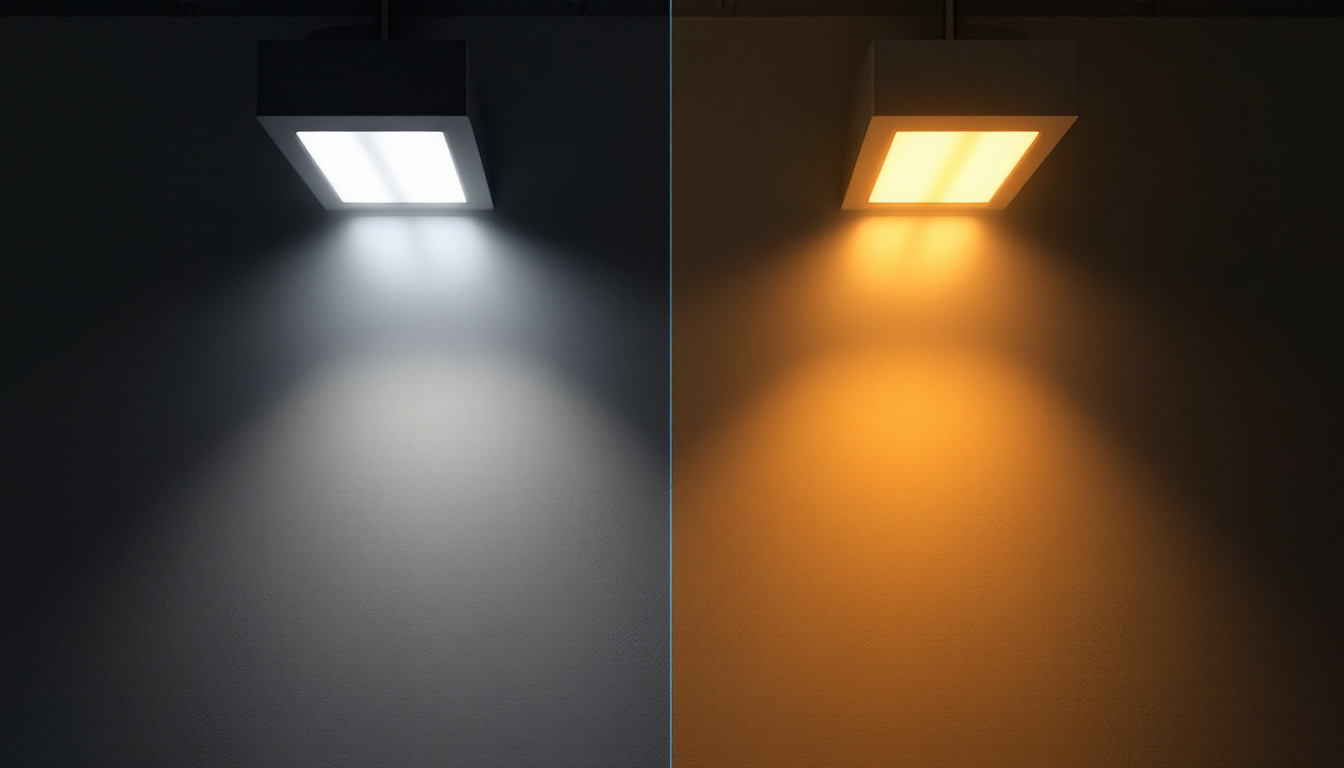
In the world of lighting design, low ceilings present unique challenges and opportunities. For lighting contractors, understanding how to effectively illuminate spaces with limited vertical clearance is essential for both functionality and aesthetics. This guide will explore various strategies, types of fixtures, and design considerations that can help lighting professionals create bright, inviting environments even in spaces with low ceilings.
Low ceilings can create a sense of confinement in a room, making it essential to choose lighting solutions that enhance the perception of space. The primary challenges include limited fixture options, potential glare, and the need for effective light distribution. Understanding these challenges is the first step toward creating effective lighting solutions.
One of the most significant issues with low ceilings is the perception of space. A room with low ceilings can feel cramped and uncomfortable. Lighting can play a pivotal role in altering this perception. By using specific techniques and fixtures, contractors can create an illusion of height and openness. For instance, incorporating vertical lines in the lighting design, such as tall, narrow fixtures or wall-mounted lights that draw the eye upward, can trick the mind into perceiving a taller space. Additionally, using lighter paint colors and reflective surfaces can enhance the effect of the lighting, further contributing to a feeling of spaciousness.
Low ceilings often limit the types of fixtures that can be installed. Traditional pendant lights or chandeliers may not be feasible, as they can hang too low and obstruct movement. Instead, contractors must consider flush mounts, recessed lighting, and wall sconces that provide adequate illumination without encroaching on headspace. Moreover, selecting fixtures with a slim profile or those that can be integrated into the architecture of the room can help maintain a streamlined look. Innovative designs, such as track lighting that can be adjusted to focus on specific areas, can also offer flexibility while maximizing the use of available space.
Another challenge is managing glare and ensuring even light distribution. Low ceilings can lead to harsh shadows and uneven lighting, which can detract from the overall ambiance of a space. Selecting the right fixtures and employing thoughtful design strategies can mitigate these issues, creating a more inviting atmosphere. For example, using diffusers or frosted glass can soften the light and reduce glare, while strategically placing lights to illuminate corners and darker areas can enhance the overall balance of light in the room. Additionally, layering different types of lighting—ambient, task, and accent—can create depth and dimension, making the space feel more dynamic and less confined.
When it comes to low ceilings, the choice of lighting fixtures is crucial. The right fixtures can enhance the overall design while providing adequate illumination. Here are some popular options that lighting contractors should consider.
Flush mount lights are an excellent choice for low ceilings. These fixtures sit snugly against the ceiling, providing a clean and unobtrusive look. Available in various styles and designs, flush mounts can complement any decor while ensuring maximum headroom. They are particularly effective in hallways, bedrooms, and kitchens. In addition to their aesthetic appeal, many flush mount lights come equipped with energy-efficient LED bulbs, which not only reduce electricity costs but also have a longer lifespan compared to traditional bulbs. This makes them a practical choice for homeowners looking to minimize maintenance and energy expenses.
Recessed lighting is another popular option for low ceilings. By installing fixtures into the ceiling itself, contractors can create a sleek, modern look that maintains headroom. Recessed lights can be strategically placed to highlight specific areas of a room, such as artwork or architectural features, while also providing general illumination. Furthermore, the use of dimmers with recessed lights allows for versatility in lighting levels, enabling homeowners to adjust the ambiance of a space according to their needs—whether it’s a bright, lively gathering or a soft, intimate evening.
Wall sconces are an often-overlooked solution for low ceilings. These fixtures mount directly to the wall and can provide both ambient and task lighting without taking up valuable ceiling space. They can be used to accentuate features like mirrors or artwork, adding depth and character to the room. Additionally, wall sconces come in a myriad of styles, from traditional to contemporary, allowing for a seamless integration into any design scheme. Some models even offer adjustable arms or shades, providing flexibility in directing light where it’s most needed, which can be particularly beneficial in smaller spaces where functionality is key.
Beyond selecting the right fixtures, employing effective design strategies can significantly enhance the lighting in low-ceiling environments. Here are some techniques that lighting contractors can use to create a more open and inviting atmosphere.
Layered lighting is a design approach that combines different types of lighting—ambient, task, and accent—to create a balanced and dynamic environment. In low-ceiling spaces, this technique can help to distribute light evenly and reduce harsh shadows. By incorporating multiple light sources, contractors can ensure that every corner of the room is well-lit.
The color temperature of the lighting can also impact the perception of space. Warmer light (around 2700K to 3000K) can create a cozy and inviting atmosphere, while cooler light (4000K and above) can make a space feel more open and airy. When designing for low ceilings, contractors should consider the desired mood of the space and select fixtures that complement that vision.
Incorporating mirrors and reflective surfaces can enhance the perception of height and space in low-ceiling rooms. By strategically placing mirrors, contractors can reflect light and create an illusion of depth. This technique not only brightens the space but also adds a touch of elegance and sophistication.
As energy efficiency becomes increasingly important in lighting design, contractors must consider sustainable options when selecting fixtures for low ceilings. Choosing energy-efficient lighting can reduce electricity costs and minimize environmental impact.
LED lights are a popular choice for low ceilings due to their energy efficiency and longevity. They produce less heat than traditional incandescent bulbs, making them safer for enclosed spaces. Additionally, LEDs are available in various styles, including flush mounts and recessed options, making them versatile for any design.
Integrating smart lighting technology can further enhance energy efficiency. Smart bulbs and fixtures allow for remote control and automation, enabling users to adjust brightness and color temperature according to their needs. This adaptability not only saves energy but also enhances the overall user experience.
When working with low ceilings, lighting contractors must be aware of code compliance and safety regulations. Ensuring that installations meet local building codes is crucial for the safety and satisfaction of clients.
Each region may have specific codes regarding electrical installations, including height restrictions for fixtures. Contractors should familiarize themselves with these regulations to avoid potential issues during installation. Compliance not only ensures safety but also protects contractors from liability.
Low ceilings can pose a fire risk if fixtures generate excessive heat. Contractors should select fixtures designed for low-clearance applications and ensure proper ventilation where necessary. Additionally, using LED lights can help mitigate heat concerns, as they emit significantly less heat than traditional bulbs.
Examining successful projects can provide valuable insights into effective lighting strategies for low ceilings. Here are a few case studies that highlight innovative approaches and solutions.
In a recent residential renovation, a contractor transformed a small living room with a low ceiling into a bright and inviting space. By using recessed lighting and strategically placed wall sconces, they created a layered lighting effect that enhanced the room’s height. The addition of mirrors on the opposite wall further amplified the light, making the space feel larger and more open.
In a commercial office setting, a contractor faced the challenge of illuminating a low-ceiling conference room. They opted for a combination of flush mount lights and LED strips along the perimeter of the ceiling. This design not only provided ample light for meetings but also created a modern and professional atmosphere. The use of smart lighting technology allowed for easy adjustments, enhancing the flexibility of the space.
A hotel lobby with low ceilings posed a unique challenge for a lighting contractor. To create an inviting ambiance, they installed decorative flush mounts and incorporated accent lighting to highlight architectural features. The use of warm color temperatures added to the cozy atmosphere, making guests feel welcome as soon as they entered.
Lighting low ceilings may present challenges, but with the right strategies and knowledge, lighting contractors can create beautiful and functional spaces. By understanding the unique characteristics of low ceilings, selecting appropriate fixtures, and employing effective design techniques, contractors can enhance the perception of space while ensuring compliance with safety regulations. As the demand for innovative lighting solutions continues to grow, staying informed about the latest trends and technologies will empower contractors to excel in their projects.
Ultimately, the goal is to create environments that are not only well-lit but also inviting and comfortable for occupants. Whether in residential, commercial, or hospitality settings, the principles outlined in this guide can help lighting contractors navigate the complexities of low ceiling lighting and deliver exceptional results.
Ready to overcome the challenges of lighting low ceiling spaces with ease? At LumenWholesale, we provide lighting contractors like you with the highest quality, spec-grade lighting products at prices that can’t be beaten. Say goodbye to local distributor markups and hello to a vast selection of reliable, high-performance lighting that meets the most stringent industry standards. Plus, with free shipping on bulk orders, you can stock up on premium lighting solutions without worrying about hidden fees or compromises. Elevate your lighting projects and maximize value with Wholesale Lighting at the Best Value from LumenWholesale. Your clients will notice the difference, and so will your bottom line.

Discover the ultimate guide to upgrading your lighting by replacing fluorescent lights with energy-efficient LEDs.

Discover the benefits of using 8 ft fluorescent lights in your lighting installation projects.

Discover essential insights into Rab Led lighting solutions tailored for contractors.

Discover the key factors that distinguish top lighting contractors when it comes to installing large commercial ceiling fans.